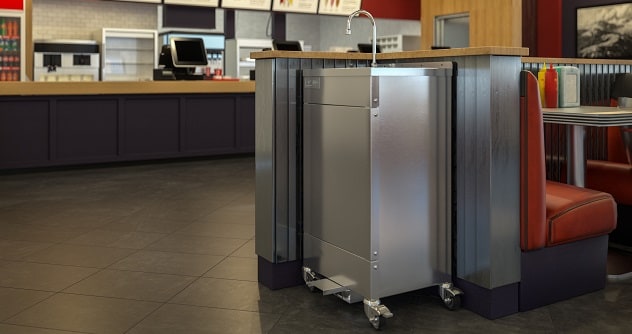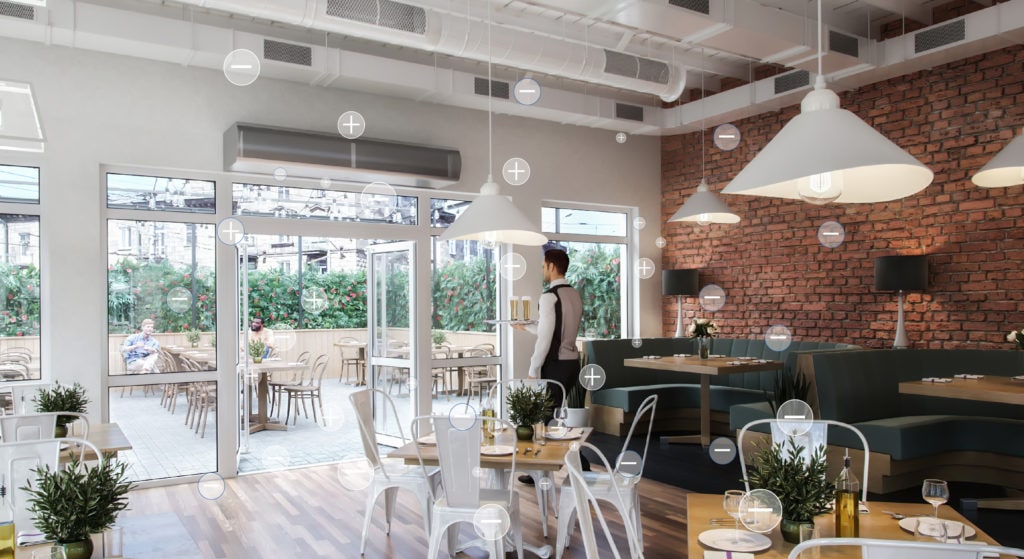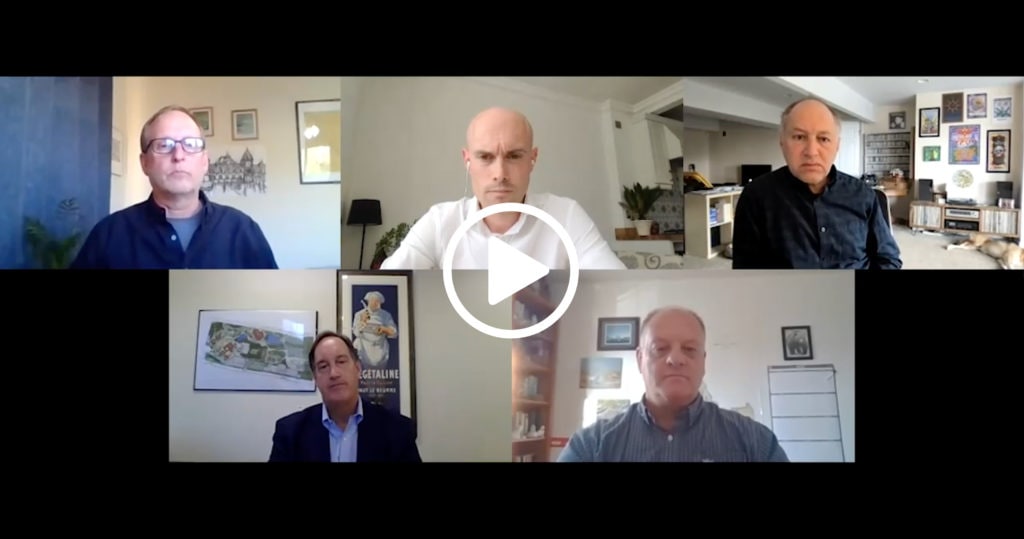
Early on in the Covid-19 pandemic, it was established that transmission commonly occurred in enclosed spaces. Thus was born the policy of social distancing in public places and the isolation of infected people to limit the spread of the disease. That approach, while well-intentioned and fairly effective, was disastrous for the foodservice sector – as it was for many other industries.
For economic reasons, the speedy reopening of businesses was a top priority, but strict hygiene standards were essential to keep the rate of infection to a minimum. Handwashing and sanitizing equipment and furnishings in restaurants was a major focus of attention, but Covid is an airborne infection. Air quality is just as important as clean hands.
The European Centre for Disease Control and Prevention noted back in 2020 that, if well-maintained and adapted for use in the Covid-19 pandemic, heating, ventilation and air-conditioning (HVAC) systems could play a complementary role in decreasing potential airborne transmission of SARS-CoV-2. Nevertheless, the search to raise standards of hygiene and keep infection rates to a minimum spurred an interest in new technologies and techniques.
“Most people were thinking about HVAC systems, and in restaurants 40 or 50 years ago you simply slapped up a grill hood for exhaust and make up air, and then put some AC in the seating area,” says Bill Bender FC`SI, president of W.H. Bender & associates. “Now, we have to think about the environment in a different way because of Covid and other contaminants – including fumes and other bacteria – so we must have the right system designed for the space and the right equipment for the incoming air.”
“Now, we have to worry about contamination, so we need to put in systems that can decontaminate the air, and Halton is one of the leaders in this field,” he adds. “It is all about enabling wellbeing through filtration and system design that is suited to the use of the room.”
Different standards
Early on in the pandemic, regulatory bodies took swift action on hygiene measures, though there were differences of opinion on the importance of air purification. Germany, for example, was swift to invest, putting €500m into the installation of ventilation systems in public buildings. Basing its actions on studies suggesting that the droplets, called aerosols, exhaled by infected people could remain in a room’s air for at least eight minutes.
The recommendation of air purification devices with high efficiency particulate air (HEPA) filters, especially portable devices that could easily be positioned in places where people were gathered, soon extended beyond public buildings to other industries. Furthermore, German authorities recommended the addition of devices with additional UVC radiation capability.
“Much depends on the country and local regulations,” says Phil Radford, senior vice president at equipment manufacturer Welbilt. “Germany changed rules quickly to require fresh air to be brought in from outside and it opened up a new market for us. We partnered with Trotec to create AeroTherm, a mobile air purification system for restaurants.”
Designed to remove virus-carrying particles and bacteria from indoor spaces, AeroTherm uses HEPA 14 filtration, thermal decontamination, and a seven-speed fan to capture 99.995% of dust, pollen, mold, bacteria and aerosol particles from medium to large-sized rooms.
While the actions of German authorities opened up this market, other countries were more circumspect about air purification systems. Norway, for example, did not recommend the use of air purifiers on the basis that they could create air currents that might actually carry the disease to more people. Furthermore, Belgium noted that there was – at least in the early days – little clinical evidence for the benefit of portable air purifiers.
Since then, however, the perceived value of air purification systems has grown, though not necessarily due to any major technological advances. “HEPA filtration has been common as an option for AC systems, as have UV lamps that kill all the bacteria,” says Radford. “That is what is being used now. UV and filtration systems clean the air and blow it back into the environment, as has been done for years, though mobile systems and even wearables, like breathing apparatus, have become more commonplace.”
Familiar tech
Though the fundamental principles on which air purification technologies are based may not have changed, the configuration of filtration and UV devices has evolved since the start of the pandemic.
“There are only a few methods for purifying air,” says Radford. “HEPA filtration is very effective, but it involves large fans and the noise they produce can be intrusive. UV light and ozone, which kills practically everything, are becoming more common, but these solutions were well known before the pandemic.”
“UV and filtration are technologies that have been around for a while but are now being used more,” agrees Bender. “If you are creating a new-build then you can design that into the layout of the building, but for existing operations you need a different solution.”
Some foodservice outlets have made little effort to improve air purification, relying on their existing HVAC and filtration systems, while others have gone to great lengths to make a focal point of their operations. One example is the Big Sur restaurant in California’s Monterey County.
When restaurants were allowed to reopen in March 2021, the restaurant was ready to show customers how it had responded to the pandemic. Its dining area was replete with tabletop mini-purifiers, strategically placed HEPA air purifiers, and an upgraded HVAC system that now features sensors to constantly measure air quality in real time.
In April this year, California municipality Carmel-by-the-Sea launched the Verified Clear Air program as part of an effort to boost the local restaurant industry in the post-pandemic world. Backed by Wynd applied sciences, which develops AI-enabled indoor air monitoring and purification systems and indoor air quality optimization specialists AirByDesign, the project aims to rebuild confidence around indoor eating for patrons, employees and residents.
Wynd’s Indoor Air Quality Optimization Service comprises a suite of products that simultaneously detect, monitor and remediate air quality. The Halo air monitor and analytics component measures more than 16 different variables of air quality, and its automation tools work with HVAC and air purifiers to react to any changes.
Industry-leading manufacturer Halton has also come out with new systems, notably the Quattro Aero, which is a highly efficient, four-stage air purification unit that can be installed in both existing or new ventilation systems. It eliminates microbes using bi-polar ionization, UVGI light, filtering and photo-catalytic oxidation. It is also IoT-enabled to allow operators to remotely monitor large numbers of installed devices.
Mobile air cleaning units such as those brought to market by Hathaspace, are a convenient choice for smaller restaurants, as they can remove airborne pollutants wherever needed and are compact in their design. The HSP001 Air Purifier, for example, is the perfect fit for rooms up to 700 sq ft (65 sq m), in which it can filter 100% of the air every hour.
Here to stay?
Investing in air purification in response to a global pandemic makes sense, but will it add value in a post-pandemic world? The likely answer is yes.
“It will become table stakes in many areas,” says Radford. “Sanitized air will be advertised on the outside of the restaurant to reassure customers.” A key part of the program launched in Carmel, California, is to enable premises to display blue window decals stating: Verified Clear Air; This enterprise has invested in your wellbeing and security.
This is as much about perception as anything else, but also wide-ranging to take preventative measures. Covid-19 is unlikely to be the last pandemic. “If customers see best practices being used then it reassures them,” notes Bender. “Cleaning and air purification processes must be visible. The technology is effective, and investing in safe environments for guests is sensible, but operators have to make sure that guests know that it is happening. It gives confidence in the operator, which is showing that it cares about its guests.”
Jim Banks




